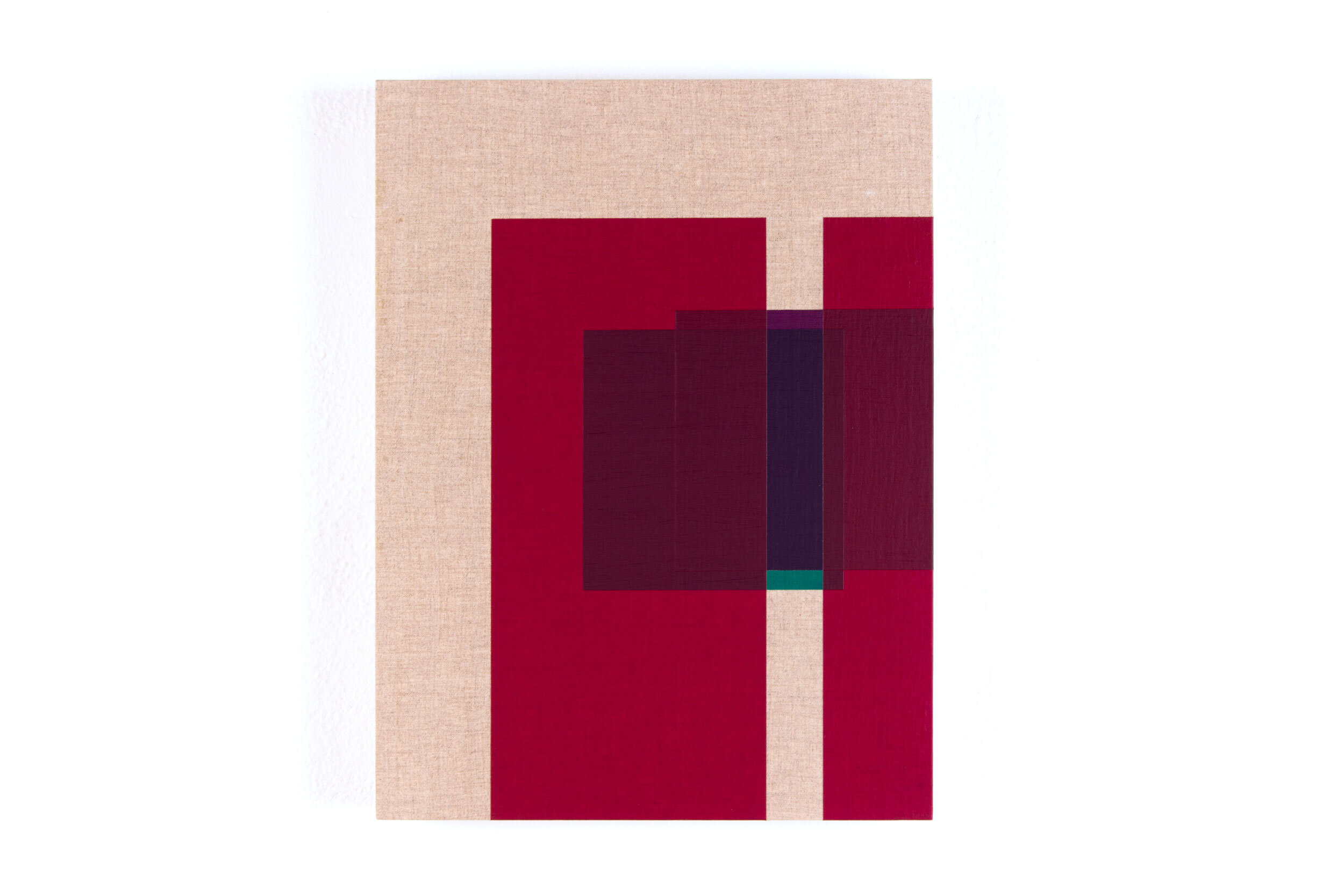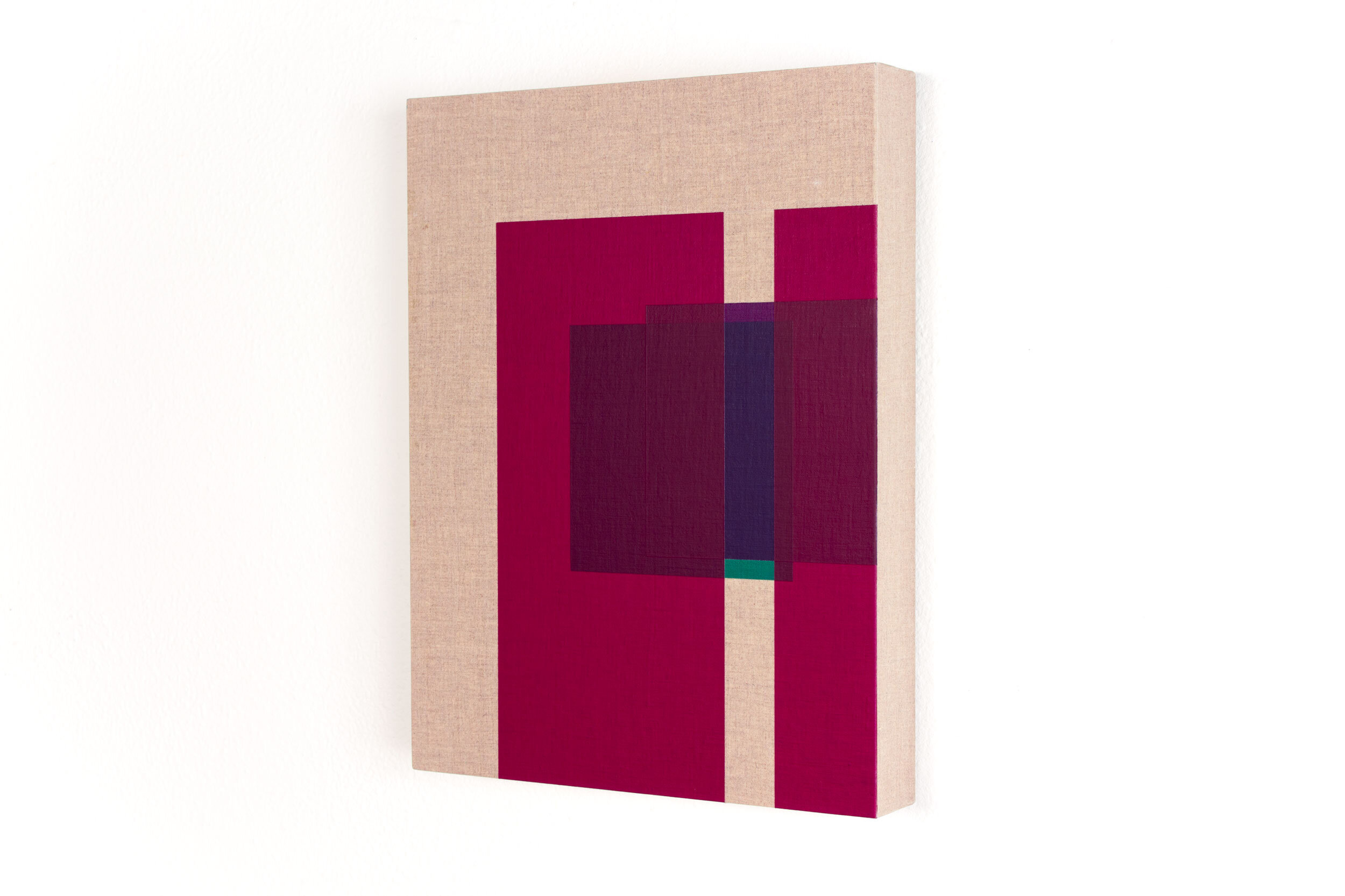Van Eyck
Acrylic on linen over panel, 12x16x2”, 2017


About this work:
Van Eyck is part of my Eureka series of hard edge, geometric abstract paintings, in which I determine the colors and composition in a work using my chance-based Eureka algorithm—here, the data generated by my algorithm resulted in a bisected field of translucent red over stripes glazed over fields of green and violet, and to the scale, location, and orientation of these fields of color. All of the works in this series are created in acrylic on tightly-woven, portrait-grade Belgian linen, adhered to panel through my archival, “wet-stretching” method.
The title is reference to one of my favorite artists, Jan Van Eyck, who created remarkably complex and realistic paintings in the early fifteenth century, at the dawn of the Northern Renaissance. Giorgio Vasari, the “father of art history,” credited Van Eyck as the inventor of oil paint. A variety of evidence has disproved this claim, most notably the discovery of Buddhist oil paintings in caves in the Bamiyan valley in Afghanistan, but there is some question of whether or not Van Eyck’s development of oil paint was an independent discovery, or if he gained that knowledge from artists outside the west, who were already working with it.* Regardless, I argue that if he invented oil paint without any knowledge of it having been invented before, it is still, for him, truly inventive, and speaks to his ingenuity and remarkable level of independent thought.** Regardless, it is safe to say that Van Eyck made significant developments in the application, usage, and stability of oil paint, changing the course of the history of art, especially western art. In a world still largely dominated by the International Gothic Style, he introduced a revolutionary new way for art to be created, challenging then contemporary notions of what art was, and significantly expanded the possibilities for what art could become. Further, and specific to this work, Van Eyck developed and implemented the technique of “indirect painting”—for example, building up to a deep, complex black through multiple, alternating glazes of red and green.*** This is a technique I employ regularly in my work. Here, the translucent red, glazed over the underlying green, and the green, glazed over the underlying violet, reveal the way translucent glazes of these colors “interact” (borrowing from another brilliant color theorist, Josef Albers), is somewhat reminiscent of Van Eyck’s technique, and so I chose this opportunity to pay homage to him through the title.
* One fascinating theory that gives credit to the possibility that Van Eyck learned how to make oil paint from eastern artists is that he worked as a spy for the Dutch court. Artists during his time would often be sent to foreign countries to work as the court painters, and during their time making portraits of the foreign royalty, they would have direct access to confidential information, which they would then relay to their own country. There is evidence that Van Eyck travelled to the middle east in this context, and could have gained knowledge of oil paint while he was there. However, the oil paintings mentioned above were created well before Van Eyck began creating his work, and to my knowledge they are the only true oil paintings which have been discovered that date to before his work. No oil paintings have been found which were made in that area at the time he visited, so it could still be that the knowledge of oil painting was lost to the world, and Van Eyck re-invented it. Please contact me if you would like to discuss this further or if you know more!
** The discoveries that I have made in mathematics and my explorations in dimensionality, specifically in constructing dimensional panels, speak well to this idea.
*** For more on this technique, I recommend Stephen Knuden’s essay “Indirect Painting, What We Can Learn from Jan Van Eyck,” which is available on his website. I studied under Professor Knudsen while pursuing my MFA in Painting at SCAD, and learned the “indirect painting” technique from him.
Shop Prints
Giclée reproduction print of Van Eyck, from my award-winning Eureka series. Professionally printed with archival inks and papers.
Paper size is size listed, each print comes with a one to two inch white border around image. Contact me if you would like to order a larger size or a custom size not listed here.
Custom made upon order, please allow one to two weeks before shipping. Free shipping to the US and Canada only. International buyers, please contact me for a shipping estimate.